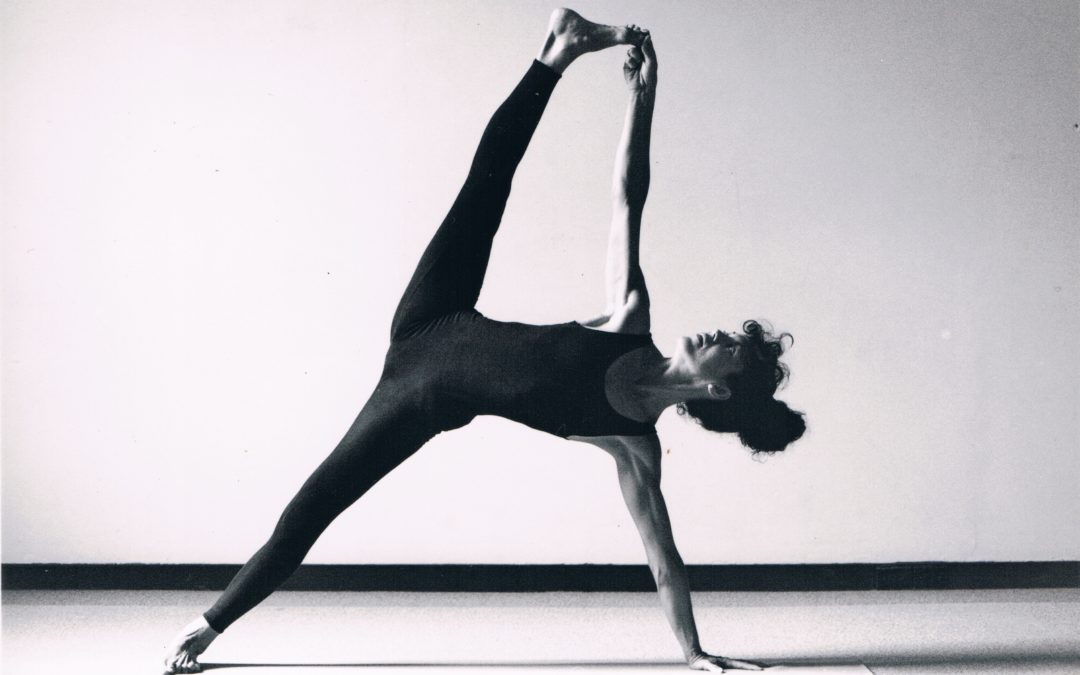I was asked about my thoughts regarding the name of the first posture in the Advanced A series of postures in Ashtanga Vinyasa Yoga. K P Jois calls this posture Vishvamitrasana and the second posture Vasishtasana whereas BKS Iyengar has the names the other way around and most modern authors have followed him. I will here briefly describe the characters of the two Vedic rishis and then make a convincing case for the correctness of Jois’ view:
Vasishta was a the first of the saptarishis (seven rishis) and he was a mind-born son of Brahma. He was thus a semi-divine being that obtained birth through a form of imaculate conception. Vasishta was also the courpriest of King Dasharatha, the father of Lord Rama and thus an important character in the Ramayana. He left us amongts others with one of the most important treatises of Vedic Yoga, the Vasishta Samhita and a 30,000 behemoth on non-dualistic yoga, the Yoga Vasishta, in which he is the teacher of the then juvenile prince Rama. Vasishta is one of the culture-bearers of the Indian civilization.
The rishi Vishvamitra started out as the powerful but conceited King Kaushika. As Indian kings do, on one of his war campaigns he swung past Vasishta’s ashrama to pay him respect. Due to his divine birth Vasishta held the highest rung in the rishi hirarchy, a so-called Brahma rishi. Vasishta asked Kamadhenu, the cow of plenty (a metaphor for abundance) to provide an adequate meal not only for the royal guest but also for his entire army! King Kaushika was so dazzled by Kamadhenu’s thickly layed on culinary pleasures that he asked Vasishta to gift the cow to him. To make things short Vasishta didn’t want to (well Kamadhenu asked for his protection anyway), increasingly rough words were exchanged and eventually the king who didn’t know wishes to be refused asked his soldiers to take the cow by force. But Vasishta easily defeated them through is Brahma danda (ascetic staff). Kaushika send bigger and bigger forces against Vasishta and in the end his entire army was destroyed by the accumulated tapas (ascetic fire) of Vasishta’s Brahma danda.
It was then that the king realized that the earthly power of a king was nothing against the heavenly might of a realized sage. Kaushika now abdicated his kingdom and went on an epic quest to become a rishi himself, out of ulteriour motives of course. It is said that he spent almost an entire world age performing asceticism, including 50,000 standing on one leg, 50,000 years meditating inside of an anthill, etc. Nobody before and nobody after him practised as long and hard as Kaushika did. I will cut a really long and beautiful story short here. After performing tapas for seeming aeons Kaushika became incredibly powerful but also innocent and child-like. Villagers found out more and more that the old simpleton had become so loving and so forgiving that many in need approached him with their concerns. Kaushika never for a moment held back and expended his accumulated tapas to fulful their needs. He would always say ‘yes, child of course I can help you’. That’s why in the end Vasishta named him Vishvamitra, that is ‘friend of the world’ and confirmed his status as Brahma rishi. The former egotistical king had become the embodiment of pure divine love. He was not any longer capable of discerning what was his advantage or that of others, he had become a true friend of all living beings. It was Vishvamitra who in this state of being the embodiment of love ‘saw’ the Gayatri mantra, the sacred-most of all mantras. The Gayatri is the formula that desribes the fabric of the entire creation and universe and Vishvamitra is its seer.
Vasishta is a being that we can learn from a lot but, due to his semi-divine birth, we cannot emulate him. Vishvamitra howwever was born into the exactly same circumstances as all of us. He had his fear, anger, pain, moments of doubt and unworthiness. But as the first human being he blazed a path that lead from being a near animal to attaining divine purity. Vasishta was always pure and superhuman but Vishvamitra rose out of the mud and the murky waters of lower emotions and transformed himself into a lotus of celestial beauty, the ‘friend of the world’. It is for this reason that he is our primordial example of celestial evolution that we remember him first at the outset of the Advanced-A series.

